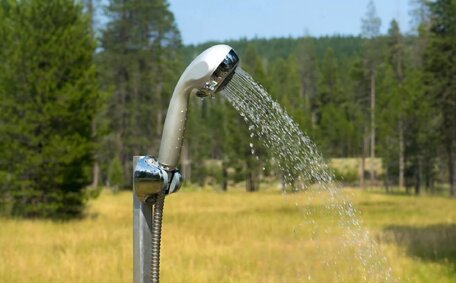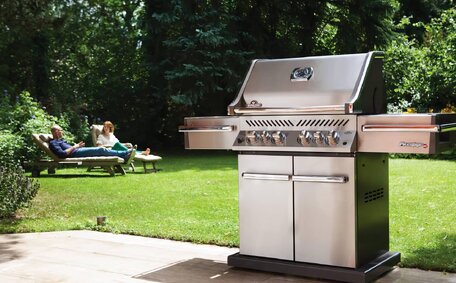Introduction to Fire Sprinkler Systems
Fire sprinkler systems are essential life safety systems designed to detect and extinguish fires in buildings. They comprise a water supply, a network of pipes, and sprinkler heads designed to activate when detecting heat from a fire. Having properly functioning fire sprinklers is critical for protecting property and human life.
Relining sprinklers is an efficient modern solution that restores function and safety without needing to replace the entire system.
This guide will explore common fire sprinkler system issues and highlight the advantages of relining as an alternative to replacement. We’ll cover applicable standards, cost considerations, which systems can be relined, and inspection best practices to preempt system failures.
Common Reasons Fire Sprinkler Systems Fail
Several factors may lead to the reduced efficiency or failure of fire sprinkler systems:
Corrosion, spurred by water and contaminants, significantly endangers fire sprinkler systems, causing leaks, pipe ruptures, and sprinkler head obstructions, with nearly 20% of wet pipe system malfunctions attributed to corrosion.
Leaks frequently occur at pipe joints and connections, which can unexpectedly increase your bill due to wasted water. They reduce water pressure, limiting the sprinkler system’s ability to adequately protect the property. Leaky pipes also raise the risk of water damage.
Blockages
Sediment, mineral deposits, and biofilm can accumulate inside pipes, fully or partially blocking sprinkler heads. This obstructs water flow and impairs activation. Partial blockages may also alter spray patterns.
Catching problems early is key to determine if components need repair to avoid catastrophic system failure and ensure robust fire protection. That’s why standards like NFPA 25 require frequent inspections and testing to find out if there are hidden issues.
Corrosion
Corrosion is one of the biggest threats to fire sprinkler systems and can drastically reduce their lifespan. It most commonly affects pipes and components made from black steel or copper.
As rust accumulates within the pipe walls, the passageway narrows, which can obstruct water flow. This buildup obstructs water flow and prevents sprinkler heads from activating properly.
Copper pipes, too, are prone to corrosion from acidic water, which leads to verdigris and pinhole leak formation. Such leaks, even when minor, substantially diminish water pressure and fire protection effectiveness.
Data suggests a 50% likelihood of failure in corroded fire sprinkler systems, but relining can revive their full functionality at a cost significantly lower than complete replacement.
Leaks
Leaks are another common issue affecting fire sprinkler systems. They typically occur at joints, fittings, and connections throughout the network of pipes. Even minor leaks can reduce water pressure significantly.
Fire sprinkler tanks need immediate attention when leaks develop as the metal substrate becomes exposed, compromising the tank’s integrity. Once the protective coating erodes, corrosion accelerates rapidly. A small pinhole leak can progress to a major rupture without rapid intervention.
It’s vital to promptly identify and repair leaks to prevent the extensive water damage they can cause to property.
Large leaks or bursts can temporarily impair fire protection by rapidly depleting water tank reserves. Catching minor leaks early via regular inspections allows easy repair before catastrophic failures occur.
Epoxy relining effectively seals and guards against future leaks in pipes and tanks, enhancing system durability. It seals existing leaks and restores full system water pressure and capacity for robust fire protection.
Overview of Pipe Relining
Pipe relining is a trenchless method of restoring old and damaged pipes without full replacement. It involves coating the inside of existing pipes with an epoxy resin liner to seal leaks, prevent corrosion and scale buildup, and remove obstructions.
The hardened liner essentially becomes the new pipe within the old structure, bolstering flow rates and resilience. Bodies such as ICC-Evaluation Service have rigorously evaluated pipe relining for code compliance.
Relining begins with cleaning the pipe’s interior and assessing damage via camera inspection. A fibreglass or felt tube infused with epoxy resin is then inserted into the pipe, which, once cured, solidifies into a jointless liner.
Pipe relining is arguably the best way to restore most sprinkler system piping to like-new condition. It prevents the need for breaking concrete or digging to access buried pipes, making it a versatile and non-invasive repair technique.
Benefits of Pipe Relining vs. Replacement
Relining presents substantial savings and reduced inconvenience compared to replacing an entire system, often being 50% cheaper and including a 10-year guarantee.
Relining eliminates the need for excavation, thus preventing demolition and restoration costs, as well as operational downtime, with a process that is completed in days rather than weeks and ensures sprinklers stay largely operational.
Relined pipes also safeguard your water system, ensuring it can last longer than old steel and copper. The rugged epoxy can outlast even updated pipe materials by 50+ years. This prevents recurring leaks and failures, saving tremendously on lifetime maintenance.
Enhanced flow rates post-relining boost fire protection, with smoother walls and cleared corrosion deposits facilitating quicker sprinkler head activation.
Facility managers will find that pipe relining offers a balance of cost-effectiveness and longevity for fire sprinkler maintenance, avoiding the complexities of system replacement while renewing essential components.
CPVC Pipe Properties and Suitability for Relining
Chlorinated polyvinyl chloride (CPVC) is a popular pipe material used in fire sprinkler systems. It offers numerous beneficial properties that make it well-suited for epoxy relining upgrades.
CPVC is highly durable and corrosion resistant. Its smooth inner walls and non-metallic construction prevent the internal corrosion and mineral buildup common with steel and copper pipes. However, CPVC can become brittle and develop external leaks over time.
Quality epoxy systems such as NuFlow 7000 offer extensive corrosion protection for ageing CPVC pipes. The adaptable epoxy liner seals leaks, improves water flow, and substantially prolongs the system’s lifespan.
Unlike metal substrates, CPVC doesn’t need abrasive surface preparation prior to relining. This prevents damage to the intact pipe walls. The epoxy simply bonds directly to the inner CPVC layer to form a robust combined structure.
Durable epoxy barrier protection provides facility managers an affordable way to upgrade key CPVC fire sprinkler components, avoiding the higher expenses of complete system replacement.
Process for Relining a Fire Sprinkler System
Relining a fire sprinkler system follows a straightforward process conducted by an experienced sprinkler contractor:
- Assess and Clean - Technicians use camera inspections to assess the condition of pipes, checking for corrosion, leaks, blockages, and other forms of damage. Interior surfaces are then pressure cleaned.
- Apply Epoxy - A fibreglass liner tube saturated with NuFlow 7000 epoxy is fed through the pipes. NuFlow 7000 epoxy has an ICC-ES listing for compliance with fire sprinkler system relining.
- Set and Cure Epoxy - After positioning, the epoxy liner is inflated to firmly bond with the pipe’s interior surface. It cures for several hours into a hardened, jointless barrier.
- Reconnect and Test - Finally, the system is reassembled with all components hooked up for extensive flow testing to validate proper water pressures for fire protection.
This minimally invasive process enables sprinklers to continue operating with little downtime, allowing facility managers to enhance critical system components without the significant costs and disruptions associated with complete pipe replacement.
Cost Comparison: Relining vs. Replacement
Facility managers should evaluate not just immediate costs but also long-term expenses when deciding on fire sprinkler system repairs, with relining typically costing about 50% less than full system replacement to start.
Over an extended timeframe, cost savings compound further. Relined pipes last 50+ years, preventing recurring leaks and failures that necessitate ongoing repairs. Replacement components typically only last 25-30 years before similar issues resurface.
The epoxy barrier coats all piping components to prevent internal corrosion for superior longevity compared to new steel or copper segments. This avoids future maintenance costs.
Cost Factor Relining Replacement
| Initial expense | $5,000 - $8,000* | $10,000 - $15,000* |
| Operational downtime | Days | Weeks |
| Maintenance cycle | 50+ years | 25-30 years |
| Lifetime cost | $5,000 - $8,000 | $20,000+ |
* Per approximately 186 square metres protected
Epoxy relining of fire sprinkler systems offers significant cost benefits and enhanced corrosion resistance, resulting in increased longevity over complete replacement.
Types of Systems Suitable for Relining
Pipe relining upgrades are suitable for a wide range of fire sprinkler systems. Some main candidates include:
- Wet pipe systems - The most common type, consisting of water-filled pipes connected to sprinklers. Corrosion and leaks frequently occur.
- Dry pipe systems - Water is held back by a valve until heat activates sprinklers. Corrosion also affects these.
- Steel sectional tanks - Bolted steel tanks develop leaks as gaskets wear and steel corrodes. Relining seals leaks.
- Standpipes - Vertical supply pipes provide firefighter connections. Relining renovates components.
- Preaction systems - Use a supplemental detection system before water discharges. Relining enhances integrity.
Many system component materials like black steel, copper, and galvanised steel piping are prone to corrosion over time but suitable for epoxy upgrades. Relining provides comprehensive protection against deterioration.
The trenchless, non-intrusive approach of relining makes it universally applicable for refurbishing a variety of fire suppression systems, enhancing the pipes internally.
Inspection Frequency and Identifying Issues
NFPA standards mandate regular fire sprinkler system inspections to ensure functionality and identify early signs of potential issues. Facilities must adhere to NFPA 25 guidelines for systematic inspections at weekly, monthly, quarterly, and annual intervals.
Inspections spearheaded by technicians include checks for:
- Pipe and component leaks
- Corrosion and mineral buildup inside pipes
- Blocked or restricted components
- Damaged pipe segments
- Proper water pressure and flow
- Impaired sprinkler head activation
Early detection of issues permits timely relining interventions, averting severe system failures, with technicians using camera probes to spot internal corrosion and blockages needing repair.
Regular inspections and preemptive relining help ensure fire sprinklers function optimally. Diligent upkeep and swift responses to issues are crucial in safeguarding human lives with an operational fire sprinkler system.
Key Benefits of Relining Fire Sprinkler Systems
Relining fire sprinkler systems yields numerous advantages such as improved durability, safety, regulatory adherence, and security. The primary benefits include:
- Longevity: Epoxy relining extends the lifespan of pipes and components by 50+ years, providing long-term protection against leaks and corrosion. This far surpasses the typical 25-30-year lifespan of new steel or copper segments.
- Safety: By preventing corrosion, leaks, and blockages, relining ensures that fire sprinkler systems operate at peak efficiency in the event of a fire. This reliable protection ensures your fire safety measures keep building occupants and property safe.
- Compliance: Relining helps facilities meet stringent fire safety regulations and codes, such as NFPA 25 and ICC-ES listings. This ensures compliance and avoids costly fines or penalties.
- Cost savings: Relining is often 50% less expensive than complete system replacement, reducing upfront costs and minimising operational downtime. The extended lifespan of relined pipes also prevents recurring maintenance costs.
- Peace of mind: With epoxy relining, facility managers can rest assured that their fire sprinkler systems are upgraded and protected against future corrosion and leaks. This provides peace of mind and confidence in the system’s ability to perform when needed.
In summary, relining fire sprinkler systems delivers long-term protection, enhanced safety, regulatory compliance, significant cost savings, and peace of mind. By choosing relining over replacement, facility managers can ensure optimal fire protection for their buildings and occupants.





